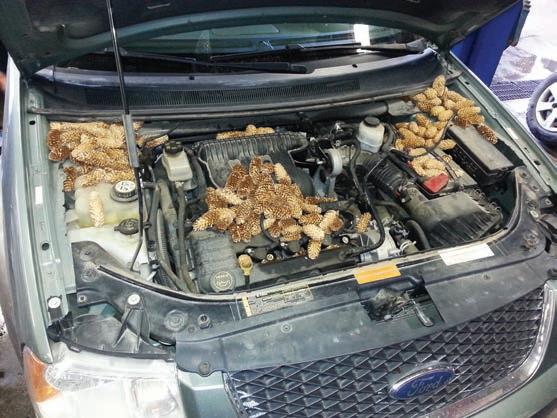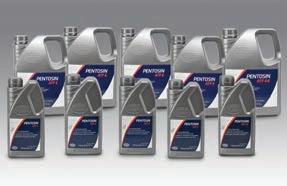NEWS
Adapting to new challenges Aftermarket analysts question how the drop in kilometers driven will affect business, as shops struggle to adjust to new operating conditions during the ongoing pandemic. By Allan Janssen
INDUSTRY WATCHERS are carefully gauging traffic patterns for clues on how the auto repair and service industry will rebound when fears of the spread of coronavirus ease and business conditions fully open up. According to analysts at DesRosiers Automotive Consultants (DAC), kilometres driven is among the biggest concerns for the Canadian aftermarket. Their recent report on the impact of the current public health emergency suggests it is a particularly insidious challenge for repair shops. "What is perhaps most striking for this downturn as opposed to previous ones from the aftermarket perspective is the sudden and unprecedented drop in kilometres driven,” analysts at DesRosiers said. Although they said current data on the amount of driving Canadians are doing is still sparse and imperfect, they’ve found evidence that it has collapsed from previous levels. Google mobility data shows that as of April 30, mobility to workplaces was down 57% in Canada. Factoring in other data, such as toll highway statistics and gas consumption, DAC calculates the decline in kilometres driven in Canada to be in the range of 46-52% with a slow recovery in coming months. Kilometers driven has long been a benchmark measurement for the auto repair and service industry, tied to component failure and chemical depletion. “The current baseline DAC model of aftermarket demand indicates that aftermarket demand will fall 11-13% this year,” analysts said. “The statistical scenarios in the model vary greatly, however, from a decline of 6-9% in the optimistic scenario, to a precipitous decline of 20-25% in a negative scenario under which a severe second wave of the virus stalls provincial economic re-openings.” Kilometers driven was also referenced in a report by the Automotive Industries Association of Canada (AIA). The survey noted that at the peak of the crisis, in early April, traffic diminished by about 80%. The report analyzed business confidence among aftermarket supply chain companies and service providers – finding the most optimism in the supply chain. Some 63% of supply chain respondents in the AIA's recent Business Operations Survey said they expect to see signs of recovery in the near-term. Only 18% of supply chain respondents saw things deteriorating further before the end of June. That is notably more optimistic than mechanical service shops (41% expecting early signs of recovery) and collision repair shops (31%). The biggest cohort of supply chain respondents, (27%) reported a revenue decrease of 21-30%. Among mechanical repair shops, the biggest cohort (39%) reported a revenue decrease of more than 50%. Among collision shops, the biggest cohort (43%) reported a revenue decrease of more than 50%.
8
M AY / J U N E 2 0 2 0
w w w. a u t o s e r v i c e w o r l d . c o m
Impact on urban shops
A survey conducted by Ohio-based IMR Inc. found that urban repair shops in the United States appear to be suffering the biggest drop in business as a result of Covid-19 prevention measures. According to the survey, 91.5% of urban repair shops reported a significant decrease in revenue, compared to 85.4% of suburban shops and 73.8% of rural shops. However, urban shops are reporting fewer supply chain issues. Asked how frequently they experience a disruption in getting parts, 20.5% answered “frequently” or “very frequently.” By comparison, 27% of suburban shops, and 30.4% of rural shops answered that way. Overall, the survey of 400 repair shops in the United States, conducted May 5-11, found that 25.8% of shops had frequent or very frequent supply chain issues. The top reasons for sourcing new suppliers during disruptions were availability of parts (49.4%), faster delivery required (27.1%), and regular supplier closed (14.1%). Despite supply chain issues, shops remained largely loyal to their preferred brands, with most shops reporting that they rarely or never switched brand.
Deferred work
Another DAC poll noted a decrease in revenue among Ontario repair shops of between 26% and 50% in April. Shops reported decreases in most job









